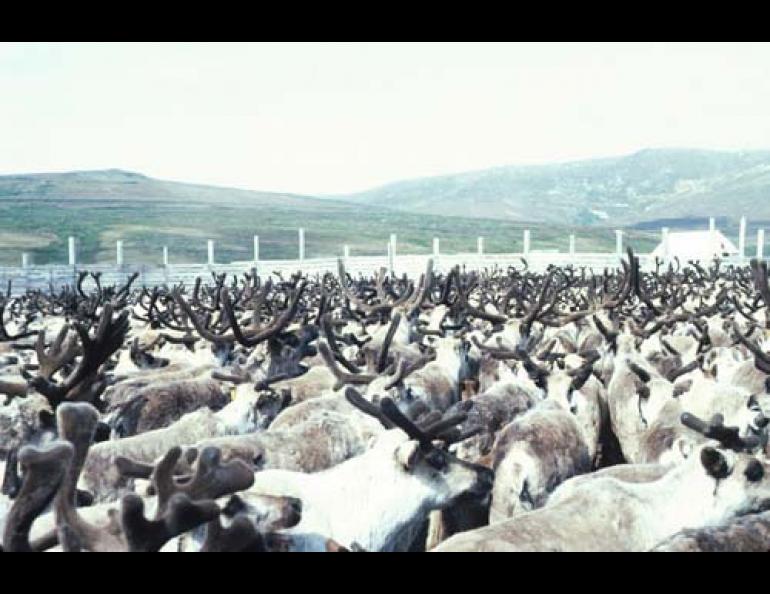
Caribou Threaten Reindeer Herders' Way of Life
The western arctic caribou herd changed the life of Palmer Sagoonick, a 2001 Iditarod musher who reached Nome in 45th place. In his biography for the race's web site, Sagoonick wrote: "Since I lost my reindeer herd due to the caribou migration, I have had time to raise and race dogs competitively."
Sagoonick lives in Shaktoolik, a wind-raked village of friendly people located south of Alaska's Seward Peninsula, where reindeer herding has been part of people's lives for more than a century. The recent infiltration of thousands of caribou onto the peninsula has herders struggling to keep their domestic reindeer separated from their wild cousins, which roam great distances and don't seem to mind when reindeer join them.
Including Sagoonick, eight of the 15 Native reindeer herders in the area have lost their entire herds to the western arctic caribou herd in the last five years.
Reindeer, differing from caribou only in that they are tame, have been part of the Seward Peninsula landscape since 1892. That's when Sheldon Jackson, Alaska's general agent for education, began importing about 1,300 reindeer from Siberia. Jackson said the local Natives needed the reindeer as a stable and sustainable source of red meat. Though the Natives didn't gain possession of most of the reindeer until the late 1930s, herders from different villages have since sold meat to Alaska and Outside markets and velvet antlers to Asians.
Greg Finstad, the head of UAF's Reindeer Research Program, describes the 1996 westward migration of the western arctic caribou herd as a "tidal wave of animals moving over the landscape" that has absorbed reindeer at an alarming pace.
Since 1981, Finstad has worked with the reindeer herders of the Seward Peninsula, traveling the hilly tundra landscape on snowmachine, four-wheeler and on foot. Recently, Finstad and reindeer herder Tom Gray of White Mountain installed radio collars that transmit signals to satellites on four of Gray's reindeer. The tracking devices allow Gray to track his herd on the Internet while sipping his morning coffee. Gray uses the information to help him in his fight to keep his 400 reindeer separate from a nearby band of caribou. Once the owner of 1,400 reindeer in a herd he wanted to pass on to his son, Gray lost about 700 animals in 1996, when the reindeer drifted off with caribou from the western arctic herd.
In a world without caribou, reindeer are predictable animals. They stay in one place, and one snowmachiner can herd thousands of reindeer into a corral or wherever he or she wants them to go. When caribou mingle with reindeer, reindeer tend to hoof it to places unknown.
"Reindeer get caught up in the current of caribou, sometimes never to be seen again," Finstad said.
About 50,000 caribou from the western arctic herd infiltrated the Seward Peninsula in 1996 after more than a century of roaming elsewhere. Finstad estimates about 200,000 western arctic caribou now occupy the Seward Peninsula. The caribou have spread themselves almost as far west as Nome.
The invasion of the western arctic herd may not mean the end of the reindeer industry on the Seward Peninsula. With information from 16 satellite collars and 70 conventional radio collars, herders are ready to recover their lost reindeer with helicopter and snowmachine this spring if the caribou head north and the reindeer stay behind. A chance also exists that the caribou will migrate out of the Seward Peninsula and not return for years, as caribou are wont to do.
With the use of the satellite collars still around the necks of reindeer defectors, Finstad and the herders will this spring be able to see how far the reindeer are following the caribou. For the first time, they'll be able to tell whether or not the herders will recover their animals and continue a way of life that began 100 years ago.





